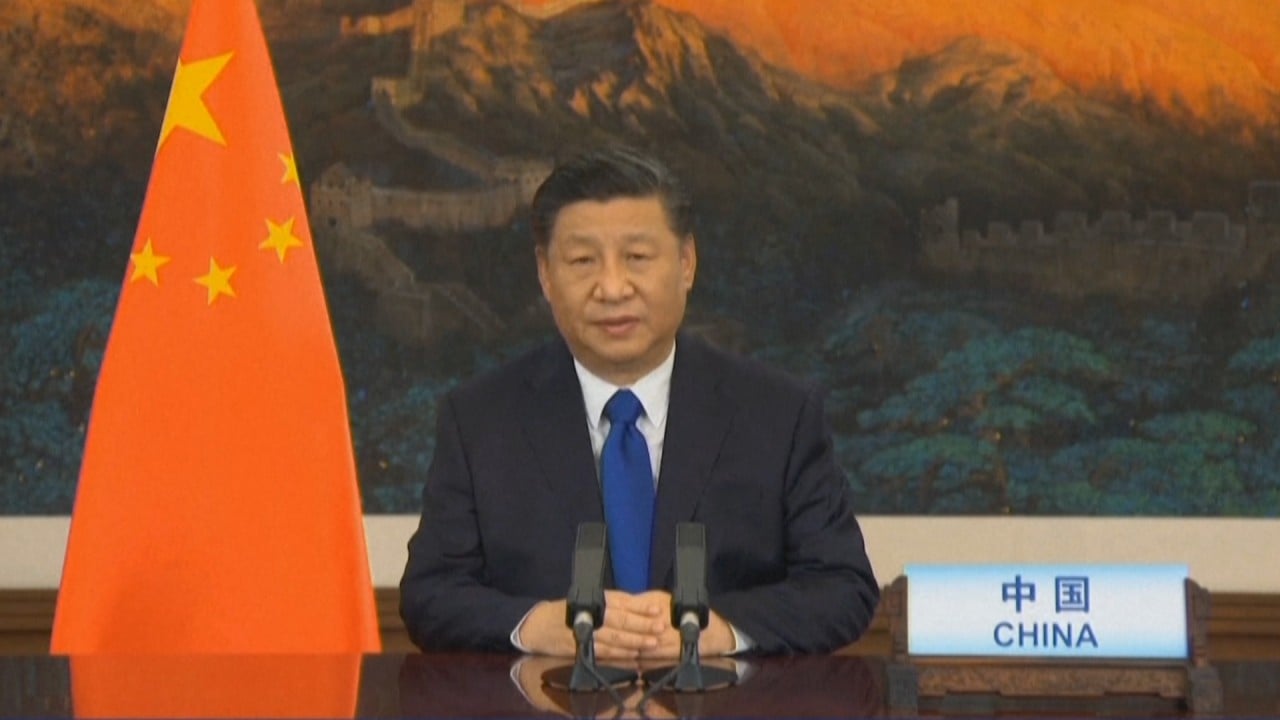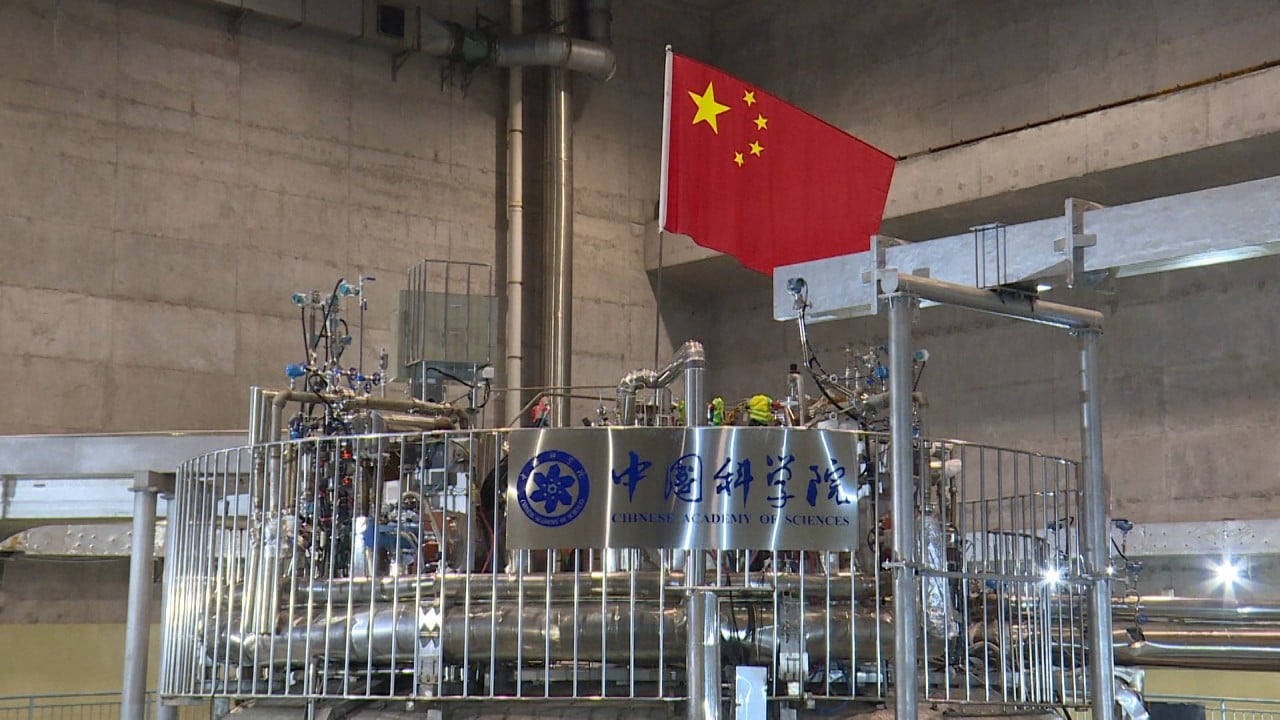
China puts nuclear power, waste disposal on the front burner in bid to meet climate targets
- Beijing wants industry development accelerated in the next five years
- That includes building more facilities to deal with radioactive waste
In its draft 14th five-year plan released on Friday, Beijing also calls for home-grown third-generation nuclear technologies like Hualong One and Guohe One to be promoted.
To push forward the industry, the five-year plan to 2025 also calls for demonstration projects to be built for small modular reactors and floating nuclear plants.

China last year pledged to hit peak carbon emissions by 2030 and become carbon neutral by 2060. Nuclear power is a big factor in achieving those goals, but it has already missed a target of having 58 gigawatts of capacity in service and 30GW under construction by 2020.
In its next five-year plan, Beijing has set a new target of having 70GW of nuclear capacity by the end of 2025, a 27 per cent increase from the 51GW at the end of last year.
It had about 21GW of capacity under construction at the end of 2020, which did not meet its target but was the largest nuclear plant programme in the world, according to the China Nuclear Energy Association.
Five things you need to know about China’s biggest political gatherings
Wang Yingsu, secretary general of the nuclear power branch of the China Electric Power Promotion Council, said he was “optimistic” about the development of nuclear power in the country.
“China’s third-generation nuclear technology is world-leading and the peak emissions and carbon neutrality targets create a good opportunity for nuclear power development,” he said.

01:47
China’s first Hualong One nuclear reactor begins commercial operations
But expansion of the industry will mean more radioactive waste to dispose of, which experts say is a problem that China has to address.
“If we want to develop nuclear power, the [issue of] radioactive waste will come to the fore,” Wang said. “If we can’t solve this problem, it will restrict the development of the industry.”
Beijing’s draft plan for the next five years includes building more low- and medium-level radioactive waste disposal sites and nuclear fuel reprocessing plants. Low-level waste refers to contaminated gear from a plant like protective clothing, while medium-level waste includes filters and used components. Together they account for about 99 per cent of radioactive waste.
High-level waste mainly refers to spent nuclear fuel, and the safest way to dispose of it is to bury it hundreds of metres below the surface for up to a million years.
China ‘must power up nuclear plans’ to meet carbon neutral targets
China has three low- and medium-level disposal sites – in Gansu, Guangdong and Sichuan provinces – but they cannot deal with all the radioactive waste already generated in the country every year.
“A 1-gigawatt nuclear reactor generates about 50 cubic metres of radioactive waste every year,” Jiang Guang, head of radioactive source management at the National Nuclear Safety Administration, said in April. He said a total of 16,000 cubic metres of low- and medium-level radioactive waste had been generated in China as of the end of 2019.

01:24
China to reduce carbon emissions by over 65 per cent, Xi Jinping says
In a paper last year, Zhao Chengkun, vice-chairman of the China Nuclear Energy Association, said the Gansu disposal site had only completed 10 per cent of its planned capacity and was mainly taking military nuclear waste and some from a power plant in Zhejiang. The Guangdong site meanwhile was supposed to take waste from the Daya Bay plant in the province but had not yet begun operating, while the Sichuan site only accepted nuclear waste generated locally.
“We still have not built a real low-level waste regional disposal site,” Zhao said.
He added that China would generate about 150,000 cubic metres of low-level radioactive waste by 2060, based on the current pace of installing capacity.
But if China aims to have 150GW of nuclear capacity by 2035, as some experts have estimated, it would have some 250,000 cubic metres of low-level waste to deal with by 2060.
Tian Li, vice-president of the nuclear power branch of the China Electric Power Promotion Council, said it would be up to Beijing to find a solution.
“China has planned to do this for years, but there are obstacles … because of the ‘not in my backyard’ phenomenon,” Tian said. “No province wants to build a disposal site – they want to transport the waste to other provinces. So it needs the central government to make the decision.”

01:03
Chinese scientists experiment with gaining limitless clean energy through fusion reactions
A site has been selected for disposal of high-level waste, with construction work expected to finish on the Beishan underground research laboratory in Gansu by 2026. Tests are expected to be conducted from 2021 to 2040, and a geological repository is to be completed by 2050, according to a government research and development plan.
A reprocessing plant is also in operation in Gansu on a trial basis, with capacity for 200 tonnes of uranium per year, according to the International Atomic Energy Agency.

